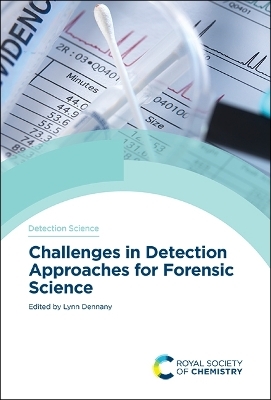
Challenges in Detection Approaches for Forensic Science
Royal Society of Chemistry (Verlag)
978-1-83916-022-6 (ISBN)
Forensic science combines analytical science with the requirements of law enforcement agencies and legislation. This can often pose challenges within the development of novel analytical methods, particularly with the drive to have more in-field and in-situ applications to facilitate the investigation of criminal cases. This book will explore the specific challenges encountered by forensic scientists and the developments that are being made to address these within the framework of the legislative requirements. It will provide a critical appraisal of the current challenges facing analytical approaches for the detection of forensic evidence and the state of the art technologies used to address these challenges.
Providing an excellent combination of current research and how this pertains to forensic investigations, the book will also highlight key obstacles within this ever-changing environment. Aimed at graduates and forensic professionals, this is a unique oversight of the current work being undertaken within the development of analytical methods and also in the interpretation of complex crime scene samples.
Dr Lynn Dennany is based the University of Strathclyde and her research interests focus on the application of analytical detection techniques for chemical and sensor development within the fields of illicit substances and explosives. Within this, her group researches three core areas: novel ECL materials, including nanoparticles, monomeric and polymeric materials; development of robust surface attachment strategies for enhanced ECL sensitivities and multiplexed detection; and the creation of novel advance methodologies for ultrasensitive chemical detection that will improve on site and portable forensic detection strategies. In particular, the detection of trace levels of illicit substances and the development of electrochemical strategies for biological evidence identification and quantification are continuing themes within her group. She is also keenly interested in the development of novel materials for these forensic applications as well as finding new avenues to apply these new materials. This has currently expanded to include the electrochemical detection of illicit substances such as drugs of abuse, both from street and biological samples, explosives, gunshot residue detection and forensically relevant genetic sequences.
Detection Strategies for Traditional Illicit Substances;
Novel Detection Approaches to Tackle the Challenges of Complex Matrices for Alternative Drugs and New Psychoactive Substances;
Challenges in the Analysis of Toxicological Samples;
Fingermarks;
New Challenges in Forensic DNA Analysis;
Challenges in Fire Investigation;
Interpretative Challenges for Forensic Chemistry;
Hybrid Likelihood Ratio Models for Forensic Applications: a Novel Solution to Determine the Evidential Value of Physicochemical Data
| Erscheinungsdatum | 19.04.2021 |
|---|---|
| Reihe/Serie | Detection Science ; Volume 20 |
| Verlagsort | Cambridge |
| Sprache | englisch |
| Maße | 156 x 234 mm |
| Gewicht | 557 g |
| Themenwelt | Naturwissenschaften ► Chemie ► Analytische Chemie |
| Recht / Steuern ► Strafrecht ► Kriminologie | |
| ISBN-10 | 1-83916-022-5 / 1839160225 |
| ISBN-13 | 978-1-83916-022-6 / 9781839160226 |
| Zustand | Neuware |
| Informationen gemäß Produktsicherheitsverordnung (GPSR) | |
| Haben Sie eine Frage zum Produkt? |
aus dem Bereich


